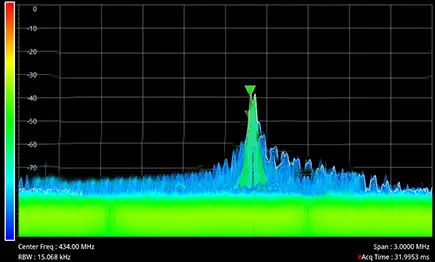Frequency Hopping Spread Spectrum vs Fixed Frequency
Wireless remote controls use either a fixed frequency (FF) or a Frequency Hopping Spread Spectrum (FHSS). A lot of Elsema’s remote controls operate on five frequencies, and customers ask about the benefits of doing this versus using a single frequency.
Fixed Frequency
Fixed frequency remote controls use a single frequency channel to transmit and receive the data. In each region of the world there are licence free bands (ISM Bands), for example Australia and Europe is 433MHz or USA is 915MHz. The public commonly uses license free bands, and when two or more users in the same area share a frequency, the transmissions become corrupted. This interference often prevents the receiver from activating when the remote control button is pressed.
Frequency Hopping Spread Spectrum
Frequency Hopping Spread Spectrum (FHSS) is a wireless technology that enhances signal reliability by rapidly changing, or “hopping,” between different frequencies within a set range. By using this technique, FHSS enables data transmission across multiple frequencies, making it more resilient to interference. If a portion of the spectrum is blocked, the system can still operate effectively. For example, in a five frequency hopping system, even if one, two, or three frequencies experience interference, FHSS maintains a stable operating range.
One of the key benefits of FHSS technology is that each remote control unit uses its own unique frequency set and hopping sequence. This reduces the chances of two devices accidentally sharing the same frequency at the same time, a common issue in traditional wireless systems. In the rare event of a “hop clash,” where two devices hop to the same frequency at the same time, the messages become corrupted. However, the probability of both devices hopping to the same frequency again is low, maintaining signal integrity and reducing errors.
Compared to single frequency systems, FHSS technology is much more resistant to interference from other devices. The constant frequency changes reduce the risk of interruptions from nearby equipment, making FHSS ideal for environments with high device density or heavy in-band interference. This increased reliability makes FHSS a preferred choice for applications like remote controls, Wi-Fi, and other wireless communication systems where consistent signal quality is essential.
Elsema’s Multicode series and the latest PentaFOB® and PentaCODE® keyring remotes use FHSS technology.
The left diagram shows a spectrum analyser of a fixed frequency (FF) and the right diagram shows 5 frequencies hopping over a time domain


